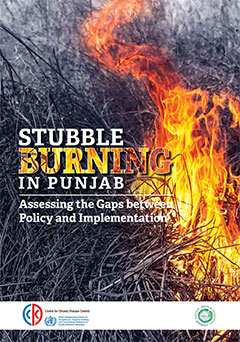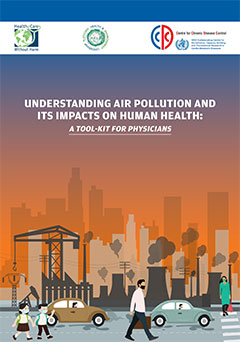Resources
Air Pollution And Human Health
Stubble Burning in Punjab: Assessing the Gaps between Policy and Implementation
India has a huge task ahead, as we face a dual challenge of curbing growing air pollution levels across the country as well as health impacts from poor air quality which is starting to affect many Indian states. At present, stubble burning is blamed by many or perceived as one of the biggest reasons for hazardous air pollution levels in Delhi and in Indo-gangetic Plain . The practice of crop residue burning is prohibited by many state governments and the Supreme Court of India in 2019. The National Green Tribunal (NGT) also imposed fines in 2015 ranging between 2,500 INR to 15,000 INR on farmers to discourage them from burning paddy fields. Besides the fine, NGT has notified the state governments of Delhi, Rajasthan, Punjab, Haryana and Uttar Pradesh to update on the steps taken to check the harmful practice. But these ruling and fines have had a very little impact on the ground, with the practice still being widely followed for many reasons. The state and central governments have passed many policies in the last decade to aid farmers to move away from stubble burning. This presents an opportunity to investigate these policies and its effectiveness in one of the states – Punjab in north-western India which practices stubble burning in huge numbers.
IEC on Air Pollution and its Health Impacts
These are a bunch of informative material on air pollution and its impacts on human health. These posters have been developed for training and awareness building. Besides English and Hindi, the posters are available in five regional languages.
Understanding Air Pollution and its impacts on Human Health: a tool-kit for physicians
Despite studies showing the severe implication of air pollution on human health, the public is still not engaging enough in air quality policy initiatives and the level of awareness and knowledge of the effects of poor air quality on health is often low. High impact issues like air pollution need to be communicated effectively. Doctors are the first responders to any health crisis, they are not only stewards in their profession but also possess high social regard, any word of information flowing through them is regarded with high value and could have a positive impact. Informed and aware doctors can effectively communicate to patients and visitors about the ill effects of air pollution and the ways to combat air pollution. This document acts as a guide and a strategic approach on how to create awareness among patients on air pollution and its adverse health outcomes.
Strengthening Pollution Control Boards to achieve the National Air Quality Standards in India
The study was undertaken to understand the institutional and informational barriers that are hampering the goal of achieving the NAAQS across the country. Primary research for this study was conducted in purposively selected sample cities – Lucknow, Patna, Ranchi, Raipur, Bhubaneswar, Vijayawada, Goa, and Mumbai – which were geographically distributed based on a few criteria. Series of key informant interviews were conducted to understand India’s roadmap to achieving the NAAQS and the barriers in attaining the same in an endeavour to strengthen India’s efforts to achieve the SDG target of reducing pollution related diseases by 50%.
Understanding Knowledge, Attitude and Practice of Health Practitioners Towards Health Effects of Air Pollution in India
This study aims to understand current knowledge, awareness, and perspectives amongst doctors about the prevalence of air pollution as a risk factor for health as well as the importance of effective communication and outreach to patients. A comprehensive qualitative study was conducted in selected settings to assess and bring forth gaps that exist between present knowledge about harmful impacts of air pollution on health and doctor’s awareness about it. Air pollution, as compared to an established risk factor like tobacco use and smoking for acute and chronic respiratory diseases, is still not adequately covered in medical education. The objective of this study was therefore to understand if and how the medical community perceives the issue of air pollution, whether it is perceived as a possible threat or risk factor for various health outcomes and why. The idea would also be to understand if doctors talk about air pollution as a potential risk factor with their patients, which specific cases do they do so in and if not, then why?





